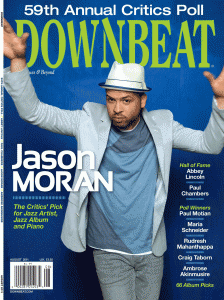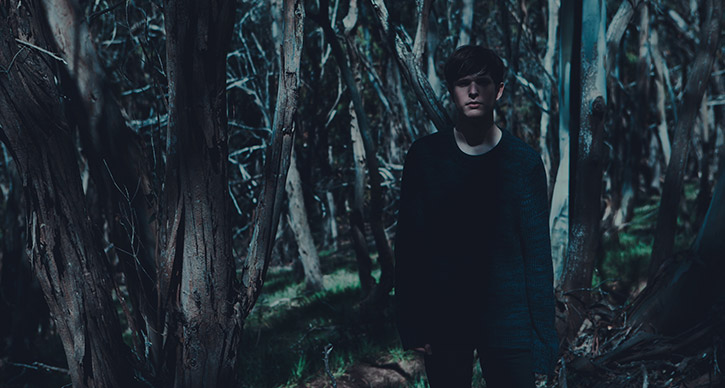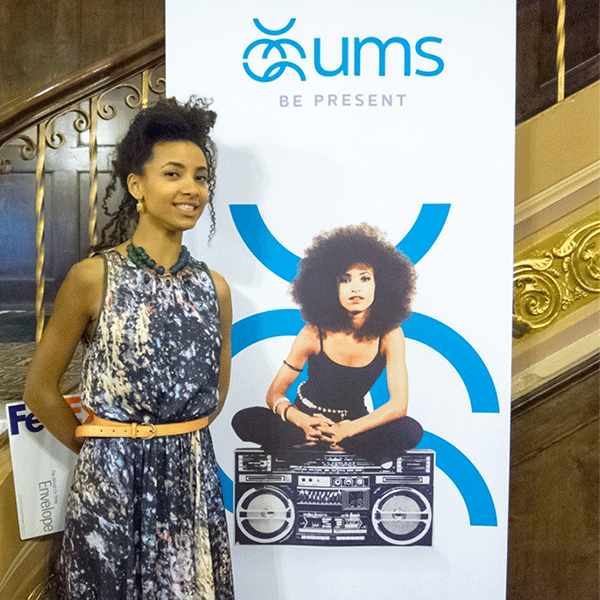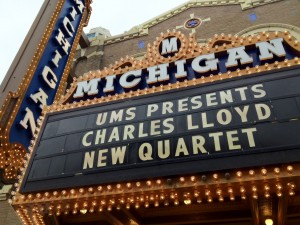Interview with James Blake
Currently touring the US and Canada, James Blake offers audiences a taste of the evolution of his sound with his sophomore release Overgrown (out now on Universal/Republic). Blake performs at the Michigan Theater in Ann Arbor on November 11, 2013 as part of the 2013-2014 UMS season.
He took a few minutes to chat with us about the music, the rich musical history of the Detroit area, and balancing DJ and band life.
Drew Waller: Detroit. Since you’re stopping in the area on your tour, how much do you think about the musical history of this town?
James Blake: Hmm, yeah! In terms of techno, I’m only recently a kind of “convert” in some ways. Really, some of the best, still the best music originals comes from Detroit and Chicago. We’ve really been looking forward to coming to Detroit, for that reason really. We are all into that that kind of music, and if there are any nights like that while we’re here, we’ll be there.
DW: You better believe we have a lot to offer you. You know, there is a yearly festival in downtown Detroit that’s called Movement, and I don’t know if you’re familiar with it, but a lot of the DJ “heads of state” that have a long-standing history in the area are often there alongside with newer folks like yourself, AZARI & III, Tensnake, who are building themselves in the scene and having a respect for this place, at a time when it gets put down in so many other ways.
JB: YES, I agree. I agree!
DW: For you, you have certain experiences on the road when you are overseas. You debuted top ten overseas, and people have embraced [your new album] Overgrown. Tell us about your experiences as you’ve been on the road in the US. Are there similarities or differences with how you’re received in the UK?
JB: Yeah, I mean there’s a kind of exoticism, you know, both ways. There is a kind of magic to being in a new place. Where, you know, there’s unfamiliarity, but there’s also a kind of familiarity from growing up with American references and American music. I love it here.
The audiences are seeing something that they might not see every day, too. It’s not just a band from their hometown, you know? We can FEEL the excitement. The crowds so far [on this tour] have just been utterly amazing.
DW: London, of course, is your hometown, but if you lived in the US, what city so far [in your travels] do you think you might call home?
JB: That’s a hard one. I’m a suburban kind of gent. I came from the suburbs of London, and there’s part of me that would love to live somewhere completely remote. Like on an island off of Seattle. Or maybe New York? Honestly, there are so many places I’d just have to maybe wait, until I’m — which is never going to happen — I’m incredibly rich, and can then travel and see.
DW: It will be really interesting to see what you do take away as you go from place to place. You’ve also been across the border to Montreal and Toronto during your touring travels, which actually brings us to your EPs. You did a gorgeous rendition of Case of You [by Joni Mitchell, from Blake’s Enough Thunder EP]. I put that track on heavy rotation on any given Sunday.
JB: Awwww!
DW: I do find it interesting that you do have skills and tenacity as a DJ while also being a composer, and all of your EPs have amazing B-sides [“At Birth” from Love What Happened Here EP, for example], but you don’t see many “James Blake” remixes out there. Looking on Beatport, iTunes and nothing.
JB: You’re right. I haven’t done any remixes, and no one’s made remixes [of my work].
DW: Yeah! You have so much music out there, and I find it surprising that remixes haven’t been commissioned [officially] by you or your label. I do see some that are, you know, bootleg, but nothing official. What’s your take on that?
JB: DJs, they do a kind of, bootlegs, yeah. I love that. I love the culture of bootlegging because it’s further off [from my work]. I feel sometimes, with commissioned remixes, people just “check in.” You know? People just deliver, and it might not be what you want, or maybe [the DJ commissioned] might just be doing a remix for the money. If you get the right person, that’s not going to happen but, for me, I don’t do remixes because I already have enough music there. If you wanted to hear a spin on a certain style that I’m doing, you can go and just listen to another tune. There are so many styles on [Overgrown] that you don’t really NEED a house remix of one track because you’ve got Voyeur [Track 8]. Do you know what I mean? It’s like, I’m already releases quite a lot of music, so it didn’t seem suitable to get a lot of remixes done as well.
DW: I love that answer. [A casual listener] would be thoroughly impressed to see how many EPs you’ve put out on your own. Putting them all out there is a great way to see your growth and where you’re starting to take things.
JB: I wanted it to be my story. Without being egotistical, I just wanted it to be a follow-able story with a pattern. An interesting narrative for the listener. I didn’t feel like that needed outside comment.
DW: With [the album] Overgrown, when I listen to those tracks, the production levels, the layers, all these things, I can tell you’ve gotten a lot from the things that have happened to you, musically. The people you’ve interacted with, the way that you work with your band.
With samples on Overgrown, what part do they play on tour (versus as they sound on the final album)?
JB: Yeah, we use them on stage. Like, Ben [Assister] the drummer is playing with all sorts of samples. He’s playing samples of drum hits, he’s playing samples of vocals, he playing things that we can’t play in any other way because he has two feet and two hands. He’s also an incredible drummer so there are additional things he can do that the samples can’t. We use the samples that are on the record and try to replicate the best we can while bringing something new to it, i.e., dream and feel, and no click tracks or any automation or Ableton, or any things that might tether Ben as a human drummer. An electronic pulse, a thing that is static is, well to me, disengaging.
DW: Interesting, you mention Ben. Ben Assister on drums and Rob McAndrews on guitar, both of them, and as I understand it, your manager, are DJs themselves. Do you all end up telling each other to listen to this new track, listen to something you just put together, how does that work?
JB: It’s amazing: it synergizes. We are all into different music. Rob came up on ambient hip-hop and ambient music in general: some Sigur Ros and the like. I don’t need to go into it, I wear my influences on my sleeve so you can probably tell who they are. Dan [the manager] is more house, a house DJ through and through. He’s been doing it since he was young, so he’s technically, out of all of us, THE actual DJ. Ben is really into his dub music, dub and reggae. We all have different flavors. When we play our [DJ collective party] 1-800-Dinosaur that comes across. We can kind of offer a varied night, which to me is a good night.
DW: As a DJ yourself, when you play that role, how do you mentally split your time between what you are doing for composition and what you are doing on your decks?
JB: I will profess that I don’t think I’m the world’s best DJ. I think I’m just trying my best to get the music right. I think it starts with the tune selection for me, and what kind of music I am into at the time. I have the most fun [as a DJ] and offer the most fun when I am playing music I love so it could be quite anything. To something that maybe isn’t dance-able really. Maybe a Prince tune one minute to something else I’m really feeling at the time. The best thing to play to make the night feel good.
DW: Going back a beat to when you mentioned dub. “Dubstep” and electronic music in general, it seems here in the US we are a bit slow on the upload with electronic music, and dubstep just permeated everywhere the way it did in the UK five, ten years ago. You see it in ads, for example, when you hear Nero on a Microsoft commercial. Skrillex in a :30 soundbite in between programs.
JB: What do they call it here, EDM? I don’t listen to it per se. It’s definitely a different type of music, a different genre. Enough time has gone by that we all can call it a “different genre” now without needing to tack on description.
DW: Looking at your music on different aggregate sites, different music etailers, they all have different ways of delineating who you are. On iTunes you are classified as “Dance”. On Beatport, “Electronica”. If you had to classify yourself, would you want a label at all?
JB: Eh, in a way it would be useful to get to me in a record shop, isn’t it.
DW: Ah yes, for efficiency sake, it works. James, you are on the road right now. Are certain songs speaking to you in different ways when you perform them here in the U.S. than, say, when you recorded them on the album?
JB: Um, YEAH! Retrograde has had a really huge impact at shows in a way that I wasn’t really expecting. People are singing along and clapping. Kind of a slightly church feeling to it in ways I didn’t really expect, though I could hear that there is gospel entrance to the tune itself. I love that reaction. There is this track by the Rev. James Cleveland called Peace Be Still. In almost all of his recordings, you can hear people clapping and singing to all his stuff. I get a tiny little taste of that every time people are so rapturous in the moment. I fell like I’m him in some way only that when people are really into something. It’s nice. I’m really looking forward to it and more.
For another preview of the music, take a listen to UMS Senior Programming Manager Mark Jacobson’s “Staff Picks” playlist, or Associate Manager of Community Engagement Mary Roeder’s “Electronic Music” playlist.
Esperanza Spalding at the signing after her performance
Esperanza Spalding with our UMS banner, at the signing after her performance on Saturday, April 6. Check out the live tweets of the performance from the tweet seats section.
Did you attend the performance? Don’t forget to share your thoughts.
Michigan Theater Marquee at Charles Lloyd New Quartet
Behind the Scenes With Jason Moran
Photo: L to R, Jason Moran (piano), Eric Harland (drums), Charles Lloyd (saxophones and flute), and Reuben Rogers (bass).
Editor’s note: Jason Moran is a pianist and a part of the Charles Lloyd New Quartet. We asked him to share his performing experiences, and we also wanted to know what Jason’s been listening to lately.
Photo below: Cover of August 2011 Downbeat magazine announcing Jason as 2011 Critic’s Pick for “Album, Artist, and Pianist of the Year.”
 April 2012 marks the 5th year of my musical relationship with Charles Lloyd. Time flies when you are having fun. And Charles gives the band (Eric Harland, Reuben Rogers & myself) lots of room to run. Charles is a bit of a sprinter himself, so at the drop of a hat, he’ll go shooting off into the forest, and we will search for him. These metaphors manifest themselves in the music. Whether Charles is pining over one of his favorite ballads with lyrics he adores. Or pulling out his Hungarian Taragato and making sounds that are ancient and contemporary. The music pulses and churns. And this excitement has kept me in the piano seat for the past 5 years anxiously awaiting the next foray.
April 2012 marks the 5th year of my musical relationship with Charles Lloyd. Time flies when you are having fun. And Charles gives the band (Eric Harland, Reuben Rogers & myself) lots of room to run. Charles is a bit of a sprinter himself, so at the drop of a hat, he’ll go shooting off into the forest, and we will search for him. These metaphors manifest themselves in the music. Whether Charles is pining over one of his favorite ballads with lyrics he adores. Or pulling out his Hungarian Taragato and making sounds that are ancient and contemporary. The music pulses and churns. And this excitement has kept me in the piano seat for the past 5 years anxiously awaiting the next foray.
What I love most about working with Charles is how he uses “sound,” whether he has the horn to his lips, the maracas in his hands, or he’s simply dancing along to the music. Each sparks a visceral reaction within him, and his body becomes a portal for the music. It’s what I strive for. How to remain intensely focused in the music, allowing it to dig deeper. Sometimes the best way to tell a band to “groove more” is by dancing to the music.
Eric Harland has been with Charles for maybe 10 years, and Reuben Rogers for 7 years. We are all in our mid-30s, and it’s wonderful to have a collective experience supporting one of the game’s greats. Each night, off we go, into the woods, or into the ocean.
Here are some songs I’m listening to:
Find more Jason Moran at jasonmoran.com or on Twitter @morethan88.
[LISTENING GUIDE] Flamenco is a Living Art: Your Guide
 On November 5th UMS will be presenting Diego el Cigala: one of today’s most exciting flamenco singers and musicians.
On November 5th UMS will be presenting Diego el Cigala: one of today’s most exciting flamenco singers and musicians.
I’m Joseph Pratt. For 20 years I’ve performed flamenco and classical guitar at the Amadeus Restaurant in Ann Arbor and I’m delighted to be your guide to this extraordinary music. Though I grew up in Maine and was first introduced to flamenco through television and recordings—my initial exposure was on an episode of Captain Kangaroo–the music left a lasting impression.
Flamenco is a living art form with enigmatic antecedents. This means that while it has roots with Gypsies and other ethnic groups from Andalusia, the area of southern Spain that abuts the Mediterranean, the palette of flamenco has been enriched by hundreds of musicians and dancers from many ethnic origins. This distinctive music has been the soundtrack for the complex and often violent history of the Andalusian underclass. Also, this compelling art form will sound to the listener as though two different times or eras were superimposed: a rich cultural past inspiring a dynamic, fast changing present. Flamenco musicians have learned from the traditions of their cultural past and use those rhythms and voices in their outreach to other musical forms. Where and with whom did this all start?
During the years Spain gorged itself on Aztec gold, an underclass of Arabs, Jews, Roma, North Africans and South Americans poured into the ghettos of Seville bringing with them each their own musical heritage. Not invited to partake of their host country’s riches, the oppressed sang and danced their sorrow in the same spirit as African slaves in the New World. There was a strong current of fatalism in the people who made this music. They generally had no political recourse and were limited in the choices they could make about their own lives. Sorrow, anger, and frustration came out through the music of flamenco: a collective autobiography of hated despots, hopeful lovers, broken men, and distressed women. All the while flamenco incorporates beautiful costumes and cunning virtuosos in it’s juxtaposition of good and evil, just and outlaw which makes flamenco a compelling dynamic experience—one that never fails to raise hairs on the back of my neck.
In many ways then, flamenco was a ‘world music’ before critics coined that term for sounds that bridge form and culture. In recent years Diego el Cigala, an artist originally born in Madrid has added more twists.
Diego el Cigala is particularly good at interpreting what is known as the ‘solea:’ a form of song that expresses the feelings of deep spiritual hardship and is thought to derive from Romani songs carried over generations, from the Indian subcontinent. In a New York Times interview El Cigala says: “Flamenco has to be suffered” and this is very much the tradition of the solea song form. This is not called as ‘cante jundo’ or ‘deep song’ for nothing! While listening, notice his raspy style of singing which is a characteristic flamenco vocal sound known as the ‘voz afilla’. Some would say that voz afilla is the sound of the ripping and tearing of the soul of the singer.
Did you notice how he occasionally claps his hands? Flamenco is a music very rich with rhythm and it has a unique system of accents and beats that can sound unusual to ears conditioned to hearing the music typically played in North America.
Listen to this next video of a song called Flamenco por Lorca . This type of song is called a ‘bulerias’ and is rhythmically similar to the solea but is played at a greater tempo. Take in the floating aural sensation of the flamenco beat. The percussion instrument that that looks like a box is called a ‘ cajon’ which is Peruvian in origin. It was discovered by the great flamenco guitarist Paco de Lucia in the 1970s when he was given a cajon as a gift while on tour in Peru. Paco de Lucia is hailed to be the greatest living flamenco guitarist and has given several UMS sponsored concerts. He liked the sound of the percussion instrument so much that he incorporated it into his own music. The appreciation of the cajon caught on and is now part of the sound of contemporary flamenco. Notice, also, that many hands clap out rhythms called ‘palmas’ and additionally notice the percussive effects played out on the guitar.
Now to Diego el Cigala’s new contribution to the fusion of flamenco where he explores tango. In this video, El Cigala applies voz afilla to the chords and beat of Argentinian tango. While the sound is beautiful to listen to, purists would find this selection not to be authentically Andalusian. Still, its spirit maintains a heat and passion for the flamenco singer to identify in his soul.
Currents of time and history will decide if the tango form will become intertwined with the genre of flamenco. In that spirit, the November 5 performance, which promotes the artist’s new album (Cigala & Tango) may act as a catalyst for an entirely new arm of flamenco – yet another twist in the continuity of a spectacular sound.
Importance of Being Earnest
Ann Arbor Observer‘s Sally Mitani gives us a stellar sneak peek into the UMS presentation of The Importance of Being Earnest, a high-definition broadcast at the Michigan Theater on Thursday, June 2 at 7 pm.
Oscar Wilde’s The Importance of Being Earnest is a remarkable play. It’s over 100 years old and still as light and funny as the day it was born. It’s not Hamlet or Macbeth, mind you — it doesn’t mature like fine wine or cheese, always developing new flavors and textures. It’s more like an ice cream soda that you’ve left on the table for 100 years, and miraculously still tastes the same. Wilde’s trick? The play pretends to be two hours of meaningless, airy banter that takes place in some realm of artifice so divorced from reality, it’s almost science fiction, but at rock bottom, it’s about the mating rituals of the idle rich, and Wilde’s thesis is that a smart, stylish gentleman’s stock in trade is his ability to think fast on his feet. That’s a serviceable formula, hidden beneath the glitter and pyrotechnic wordplay.
If you’re looking for depth in Oscar Wilde, consider this. When you watch The Importance of Being Earnest, you’re watching a man about to plunge over the side of a cliff. Wilde paid for his fun. Shortly after Earnest opened, Oscar Wilde took a series of misteps in his private life, a life he’d always lived pretty close to the edge. Convicted of gross indecency, he was sentenced to two years of hard labor at Reading Gaol. Upon his release from prison, he went insane, and ended his life wandering around Paris under the name of Sebastian Melmoth, dying at the age of 46. He wrote two more things after The Importance of Being Earnest: De Profundis and Ballad of Reading Gaol. The old Oscar Wilde was gone—these two works skitter between incomprehensible and hair-raising.
Two points about this production in particular.
I don’t want to get all Marshall McLuhan-esque…oh who am I kidding. I absolutely do. The Michigan Theatre June 2 production isn’t the play itself. It’s “captured live in high-definition from the Broadway stage for limited screenings in movie theaters and performing arts centers across the U.S. and internationally.” Or, as we say here in the midwest, a movie.
As a fan of actual boots-on-the-ground theatre, I’m not completely on board with this new cultural vehicle in which famous New York theatrical events are beamed out to the provinces. UMS isn’t the only subscriber to this brave new world. Quality 16 frequently shows simulcasts of Metropolitan Opera productions, but somehow when it’s happening out there at the cineplex, it seems like it’s only replacing Die Hard in a Hail of Bullets, Part 16. This downtown UMS event seems a more significant harbinger of the future of live theatre.
And a note—a fairly unimportant one, I think—on the cast. This production’s much advertised selling point is Brian Bedford in the role of Lady Bracknell (and he’s also the director). Bedford’s a Stratford regular. It was there he created the role a few years ago, and a video clip suggests he’s as qualified as anyone to play the braying, camel-faced dowager. When you think of it, anyone in this role is going to need a wig and a corset, so being a natural-born woman doesn’t necessarily confer that much of an advantage. It’s a campy, juicy part to begin with, and Bedford by all accounts doesn’t take any extra liberties with it. He doesn’t even raise the pitch of his voice a single notch–that was probably the director’s idea, and he seems to take direction well!
EDITOR’S NOTE: While UMS is interested in increasing the opportunities to see theater in Ann Arbor through creative partnerships, we are in no way replacing our regular theater series with these screenings. Like Sally, we are also avid proponents of actual “boots-on-the-ground” theater, and look to high definition screenings as a way to bring high quality, professional productions to our area that might not otherwise tour to our neck of the woods.
UMS’s Arts Round-up: August 13
 Many members of the UMS staff keep a watchful eye on local and national media for news about artists on our season, pressing arts issues, and more. Each week, we pull together a list of interesting stories and share them with you. Welcome to UMS’s Arts Round-up, a weekly collection of arts news, including national issues, artist updates, local shout-outs, and a link or two just for fun. If you come across something interesting in your own reading, please feel free to share!
Many members of the UMS staff keep a watchful eye on local and national media for news about artists on our season, pressing arts issues, and more. Each week, we pull together a list of interesting stories and share them with you. Welcome to UMS’s Arts Round-up, a weekly collection of arts news, including national issues, artist updates, local shout-outs, and a link or two just for fun. If you come across something interesting in your own reading, please feel free to share!
Arts Issues
- Just how do recording artists get paid? A look at the love/hate relationship with music copyright enforcers
- Cleveland music critic loses lawsuit against The Plain Dealer and Cleveland Symphony Orchestra
- Tales from the Fringe: A different kind of theater experience
Artist Updates
- Rosanne Cash’s memoir, Composed, was released this week
- More on Rosanne Cash, with a “Day in the Life” Profile by New York Magazine
Local Shout-Outs
- The Michigan Theater goes green with solar panel installation thanks to XSeed Energy Project
- Alleged Bansky graffiti piece excavated from Detroit’s Packard Plant up for auction on E-bay
Just For Fun
- Wondering what to do with those extra office supplies? Post-It Brand hosted the 30th annual Student Design Contest for the world’s largest artistic billboard made entirely of, you guessed it, Post-Its. Check out the winner!
UMS Announces Additions, Changes to 10/11 Season
The 10/11 UMS season opens one month from today with the site-specific theater work Susurrus at the Matthaei Botanical Gardens.
During our summer performance hiatus, we’ve been quite busy at UMS, closing out the 09/10 season and preparing for the 10/11 events. We’ve also been working to add some exciting events to the 10/11 lineup that came together too late for the initial announcement in April:
ASSI EL HELANI, Saturday, November 6 at 8 pm, Hill Auditorium. This Lebanese pop singer has been a major figure in the music scene of the Middle East since the 1990s, participating in numerous important musical events throughout Europe, the Arab World, and America. Also involved in humanitarian concerns, he is one of the true superstars to emerge from Lebanon. Tickets range from $10-$60 with a limited number of $150 VIP seats available.
NATIONAL THEATER LIVE, co-presentation of high-definition broadcasts with the Michigan Theater. Last season, UMS and the Michigan Theater joined forces to present high-definition broadcasts of three plays from the National Theater in London. The series was a big hit with audiences, and we’re delighted to announce an incredible line-up of six productions for the 10/11 season, which includes Complicite’s A Disappearing Number, which UMS brought to Ann Arbor two seasons ago. The titles include:
A Disappearing Number, directed by Simon McBurney in association with Complicite. Sunday, October 31, 2 pm.
Hamlet, directed by Sir Nicholas Hytner with Rory Kinnear in the title role. Sunday, January 2, 2 pm.
FELA! Directed by Bill T. Jones, direct from Broadway. The Tony Award-winning musical about the extravagant, decadent, and rebellious world of Afrobeat legend Fela Anikulapo Kuti explores his controversial life as an artist, political activist and revolutionary musician. Sunday, January 30, 2 pm.
King Lear, directed by Michael Grandage with Derek Jacobi in the title role, in association with the Donmar Warehouse and featuring the creative team behind the company’s recent Broadway hit about Mark Rothko, Red. Sunday, February 20, 7 pm.
Frankenstein, directed by Danny Boyle (Slumdog Millionaire, Trainspotting). Wednesday, April 6, 7 pm.
The Cherry Orchard, directed by Howard Davies and starring Zoë Wanamaker as Madame Ranevskaya. Sunday, July 17, 7 pm.
DATE CHANGES
Mariachi Vargas de Tecalitlán Date Change. To accommodate the addition of Assi El Helani, as well as youth performances for schoolchildren, the date of the public concert for Mariachi Vargas de Tecalitlán has been changed to Friday, November 5 at 8 pm – one day earlier than previously announced.
Kodo Date Change — FAMILY PERFORMANCE ONLY. The FAMILY PERFORMANCE of Kodo will take place on Thursday, February 24 at 11 am, not Wednesday, February 23 as published in the series brochure. The public performance of Kodo will still take place on Wednesday evening as previously announced.
Single ticket brochures will be mailed in about a week (don’t forget – the internet on-sale date is Monday, August 23, with phone and walk-up orders on Wednesday, August 25. Donors of $250+ may purchase beginning Wednesday, August 18!).
31 days to the start of the season…let the countdown begin!







